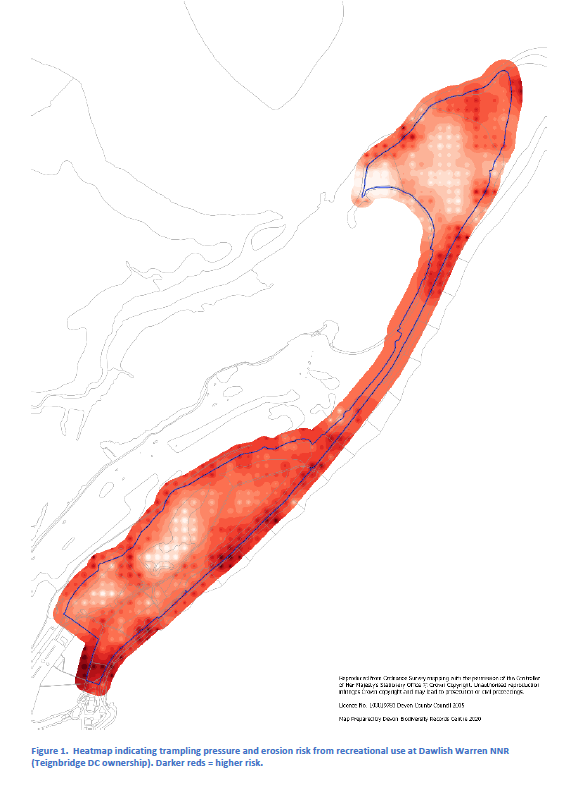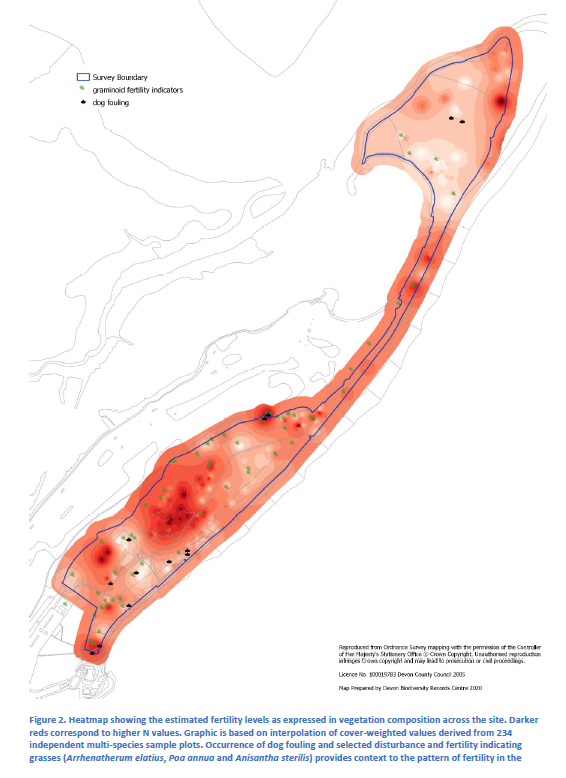Read the full report
Areas of low/high disturbance and areas of high fertility don’t support important species.
- Comparison of both the trampling and eutrophication maps, along with the maps of species of conservation concern, shows a clear pattern of areas of intermediate disturbance where notable species are found.
- Therefore, the study confirms that areas of low (and high) disturbance and areas of high fertility do not support these important species. (Figure 1, page 13 and Figure 2, page 14)


Key fertility hotspots are near access points to the reserve.
- Key fertility hotspots are near the access points to the reserve towards the south west of the site, the northern boundary of Greenland Lake and the golf course.
- The survey concludes that there is little doubt that fertility in these areas are at least partly as a direct result of recreational use and dogs in particular.
There is a complex relationship between vegetation, fertility and disturbance.
- The study identifies that plant species of conservation concern at the Warren are more likely to be associated to areas where there is a little trampling (interrupting the process of natural succession, allowing less dominant plants to persist) and are not too fertile.
- Both of these factors have more a complex relationship with the vegetation on the site than would first be apparent.